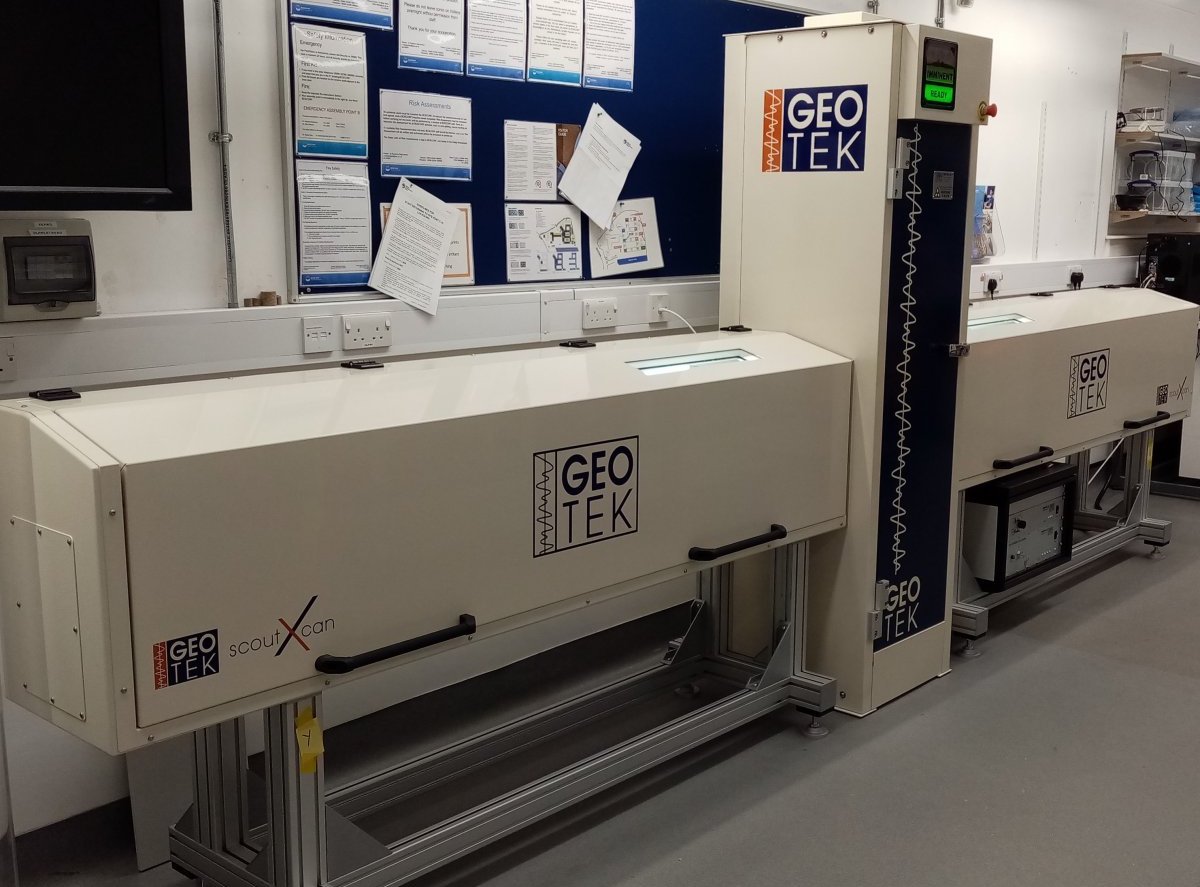Today, we welcomed a brand new GEOTEK ScoutXcan to our research facility. This new X-ray imaging scanner is especially designed to take two-dimensional and pseudo-three-dimensional laminography images of core samples.
This technique is similar to the more familiar full-3D CAT scanning method and is based on sending highly energetic X-rays through a sample, to identify density contrasts. BOSCORF’s ScoutXcan is the second instrument in the UK fully dedicated to science and research purposes. One of the main advantages of the ScoutXcan over other radiographic imaging methods is it’s high-resolution imaging of density contrasts. This make sedimentological descriptions a lot more informative, because many variations in grainsize, or laminations, are hard to see just by eye from the sediment surface.

Curator of BOSCORF Dr Suzie Maclachlan says about the arrival of the new ScoutXcan: “We are immensely proud to add this machine to our research facility and to be able to offer this X-ray imaging technique to the UK and international science communities”. Asking her what makes the ScoutXcan so special, she adds “At BOSCORF we want to be able to offer the best available analysis techniques [and] X-ray laminography is one such a technique. It is at the forefront of non-destructive core analysis”.
In short, we are delighted at BOSCORF to add this instrument to our facility. If you would like to make use of the new ScoutXcan and obtain laminographs of your research samples, please send your inquiry to boscorf@noc.ac.uk.
